TM-30-15 vs. CRI and the Future of Color Rendering
Most in the lighting world are aware of CRI, also known as Color Rendering Index. It can best be described as the quantitative measure of the ability of a given light source to reveal the colors of various objects faithfully in comparison with an ideal or natural light source. The higher the CRI value of a light source, the more accurate the color appearance of a given object.
Today, there is a new player in the game – TM30. TM30 is a new quality metric that was recently adopted by the IES to supplement and eventually replace the old CRI (CIE) Metric for measuring fidelity of a light source.
3 Main Components of TM30
- Rf which is a similar metric to the CRI (Ra) standard that measures color rendering based on comparison to a color palette of 99 colors (CRI only had 9)
- Rg which measures the average gamut shift (hue/saturation) of the source
- A graphical representation of Rg to visually represent which colors are washed out or more vivid due to the light source
Why is this important?
- CRI can be found on lamp cutsheets everywhere today and is not going away right now. The IES is still waiting for feedback and will most likely make some form of adjustment to TM30 before it replaces CRI.
- TM30 will most likely start to be used sporadically, especially in applications where color rendering is a prime concern (specifiers, retail shops, etc).
- Relative to TM30, CRI can be gamed, as it only compares 9 colors to the 99 colors TM30 compares. So if you engineer your product’s output to those 9 colors, you can inflate your score without actually improving the quality of the light source.
Specifiers
- TM-30-15 is an approved method. Use it and provide feedback to help it reach maturity
- Choosing a “better” light source may be more challenging, but also more rewarding
Below are some visuals that detail the changes as you alter the various metrics listed above, such as Rf, Rg, and CRI, as well as comparisons of color vector graphs.
IES TM30 Annex E-Specification Table
In 2019, the IES released a TM30 Specification Table that analyzes Design Intent and how likely a given light source will achieve it (see image directly above). Design Intent is the desired effect of color rendition on the lighting application. For this, the Vividness (V), Fidelity (F) and Preference (P) of a given light source are analyzed and a Priority Level created. Priority levels show the balance between allowing tradeoffs and increasing the likelihood of meeting the design intent.
As TM-30-15 is used more frequently and feedback is provided, the IES will be able to fine tune the metric to improve color rendering analysis. The ball is in the court of the lighting industry to use the TM metric and help it grow.

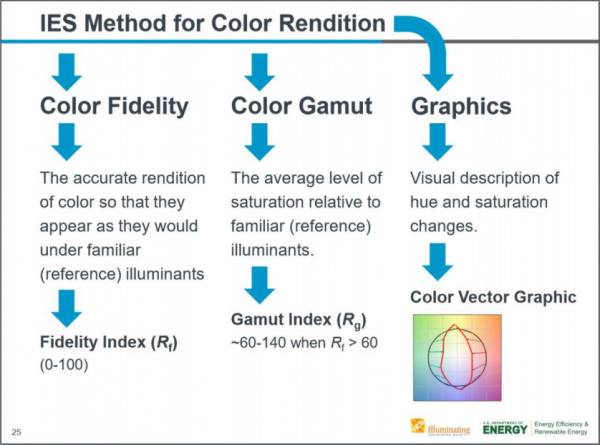
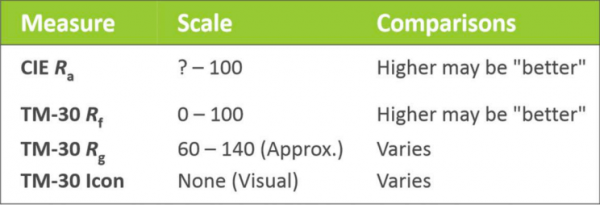
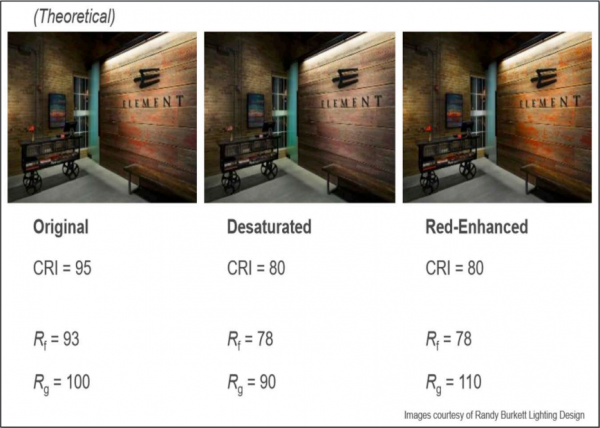
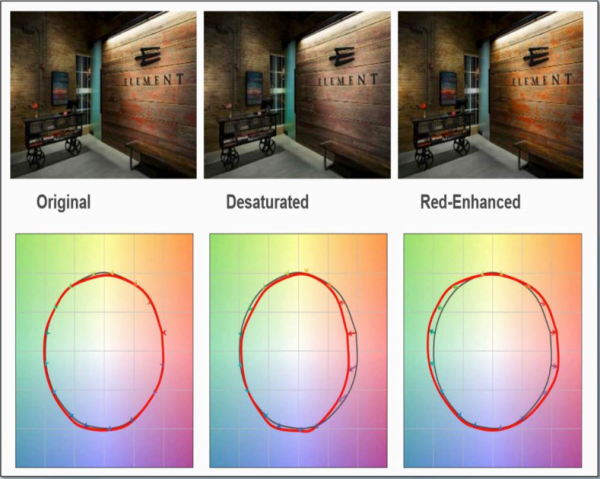
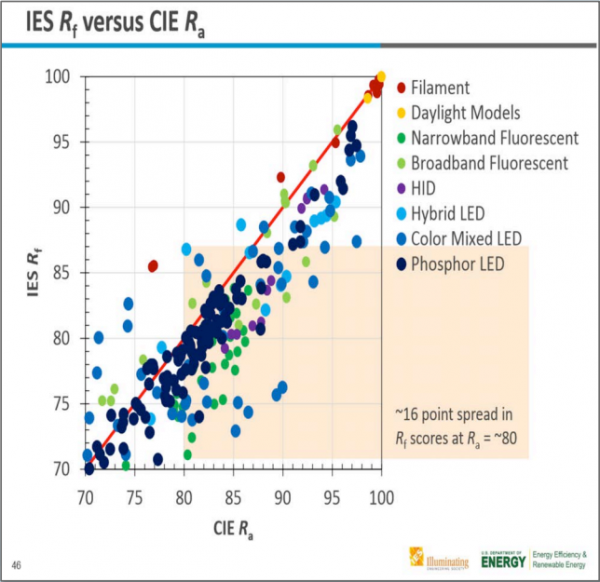
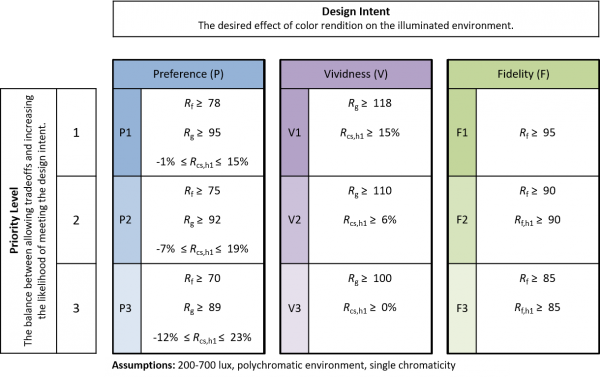


Now look at how popular high CRI is in LED bulbs. Still not hearing much about TM30
Thank you for the information. can you tell me what the What doe the IES or TM30 recommends as a Good Rf value?